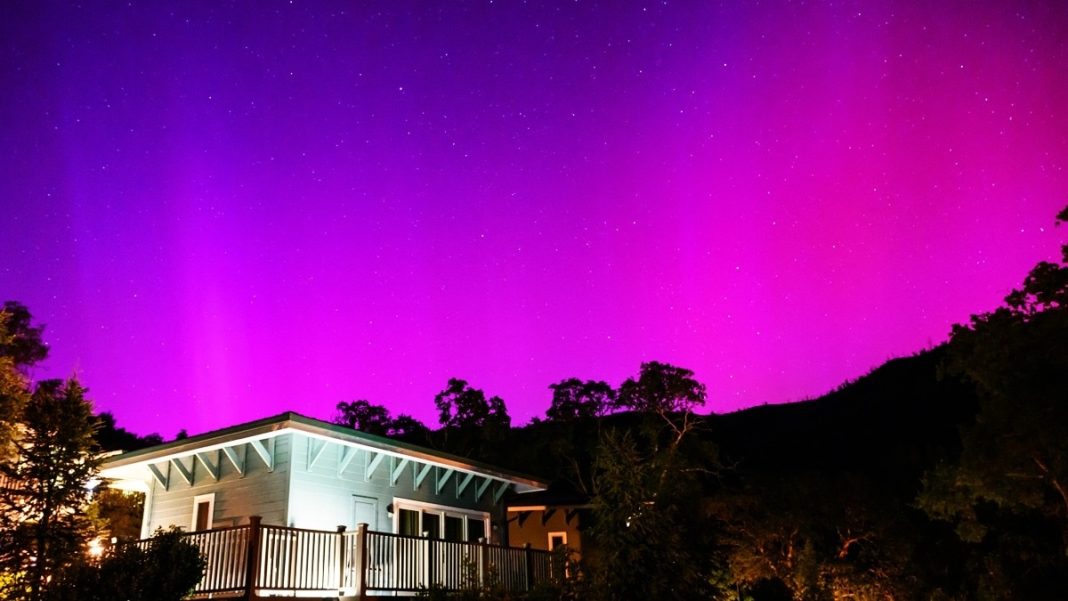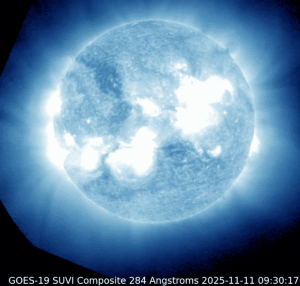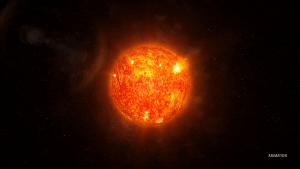Key Takeaways
- Strongest solar flare of 2025 (X5.1-class) hit Earth on November 11
- Caused severe radio blackouts over Africa and Europe
- Potential “Cannibal CME” event expected to trigger G3-class geomagnetic storm
- Satellite operations, power grids, and radio services on high alert
- Spectacular auroras possible far beyond polar regions
The Sun unleashed its most powerful solar flare of 2025 on November 11, disrupting global communications and triggering severe radio blackouts across Africa and Europe. The X5.1-class eruption from sunspot AR4274 marks the largest solar outburst since October 2024, sending shockwaves through Earth’s atmosphere.
Solar Activity Intensifies
This massive flare follows a series of powerful eruptions from the same active region, including X1.7 and X1.2-class flares on November 9 and 10. Both previous events produced coronal mass ejections (CMEs) now heading toward Earth. Scientists are closely monitoring whether the latest X5.1 flare launched another CME directly toward our planet.
Positioned facing Earth, any associated CME is likely to impact our planet, potentially merging with previous CMEs to form what space weather experts call a “Cannibal CME.” This phenomenon occurs when two CME clouds collide and amplify each other’s effects, significantly intensifying geomagnetic storms.
Impending Geomagnetic Storm
Forecasters expect two CMEs to hit Earth’s magnetosphere on November 12, possibly merging just before arrival. This collision could trigger a strong G3-class geomagnetic storm capable of disrupting satellite operations, affecting power grids, and creating spectacular auroral displays visible far beyond typical polar regions.
A similar event in April 2025 caused a severe G4-class geomagnetic storm that lit up skies as far south as France, demonstrating the potential intensity of such space weather events.
Preparedness and Monitoring
While the “Cannibal CME” scenario would amplify space weather disturbances, models also indicate the CMEs might merge beyond Earth’s orbit, resulting in a significant but less intense geomagnetic storm. Regardless of the exact scenario, satellite operators, power grid managers, and radio services remain on high alert for potential impacts.
This heightened solar activity occurs near the peak of Solar Cycle 25, characterized by increased sunspot activity and solar eruptions. The dynamic space weather environment underscores the critical need for continuous monitoring and preparedness to protect modern technological infrastructure.
For skywatchers, the CME impacts offer a silver lining: the potential for vivid auroras during subsequent nights, creating a dazzling natural spectacle triggered by the Sun’s powerful magnetic disruptions.






